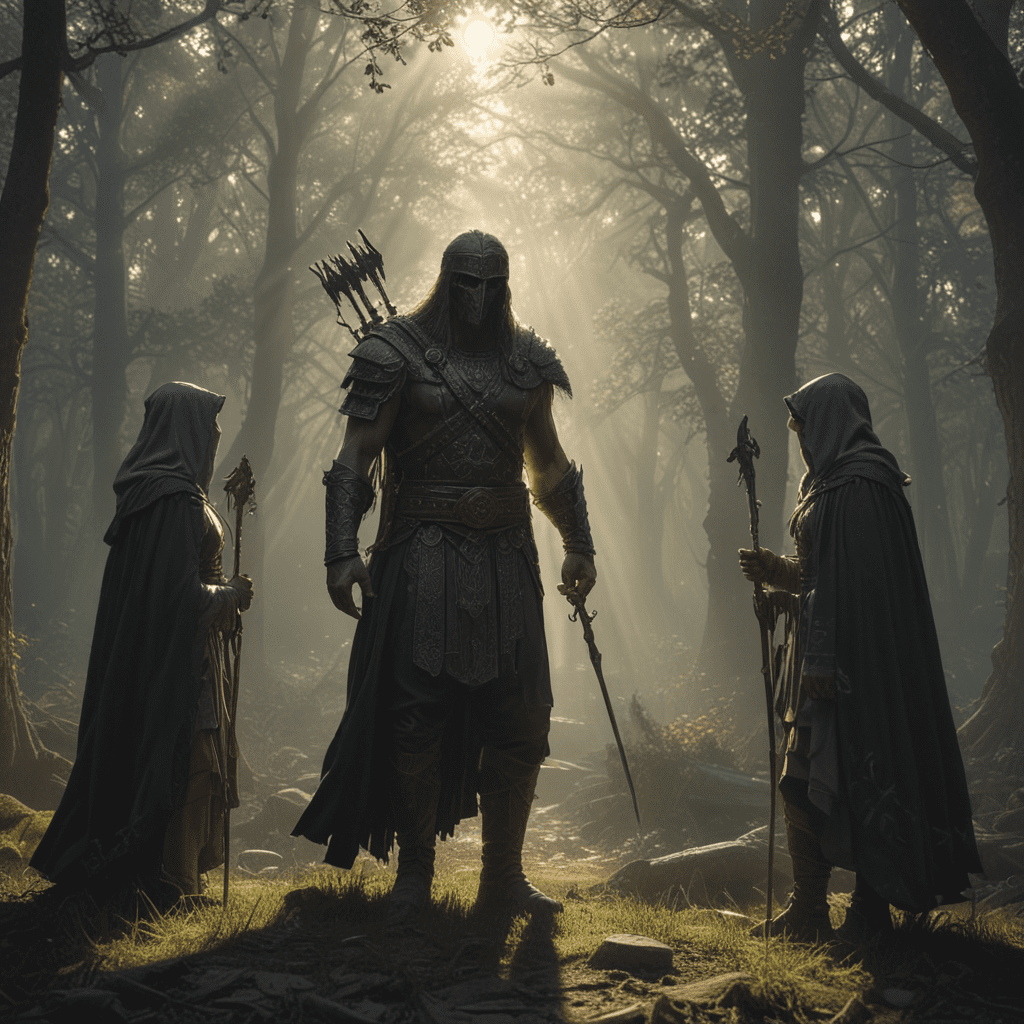The Symbolism of Shadows in Slavic Mythology
Shadows have always held a significant place in Slavic mythology, carrying a wide range of meanings and associations that shape the cultural beliefs and practices of Slavic communities. From their role as portals to other realms to their representation of fear and evil, shadows have woven themselves into the fabric of Slavic folklore and tradition.
1. Shadows as Portals to the Otherworld
In Slavic mythology, shadows are often seen as gateways or liminal spaces that connect the world of the living to the realm of the dead or other supernatural domains. It is believed that shadows can provide access to the Otherworld, allowing individuals to communicate with spirits, ancestors, and other entities from beyond. Certain rituals and incantations were associated with the manipulation of shadows to facilitate such otherworldly encounters.
2. Shadowy Entities and the Dead
Slavic mythology is replete with tales of shadowy entities that are closely linked to the dead. The most well-known of these is the Navka, a female spirit said to be the ghost of a woman who died before her time, often due to suicide or murder. Navki are believed to dwell in forests or near rivers, luring unsuspecting individuals to their deaths. Other shadowy beings include the Domovoi, a house spirit that can take on various forms, including shadows, and the Rusalka, a water spirit that can appear as a beautiful woman with long, flowing hair.
3. The Shadow of Fear and Evil
Shadows have long been associated with fear and evil in Slavic folklore. The term "zmey" (literally meaning "serpent") is often used to refer to both supernatural creatures and malevolent forces. Shadows are often seen as the manifestation of these evil forces, capable of causing harm or misfortune to those who encounter them. In some Slavic traditions, it is believed that whistling in the dark can attract evil spirits or entities that reside in the shadows.
4. Shadows as Guardians and Protectors
Despite their association with fear and evil, shadows can also hold protective qualities in Slavic mythology. In some tales, shadows are believed to represent guardian spirits or ancestors who watch over their descendants. People would often leave offerings or prayers in shadowy places to invoke the protection of these spirits. Additionally, it is believed that having a shadow indicates that one is alive and well, as shadows are thought to accompany living beings throughout their lives.
6. Shadowy Animals and Birds
Animals and birds with dark fur, feathers, or scales often carry mystical significance in Slavic mythology. Black cats, owls, and ravens are commonly associated with shadows and the Otherworld. They are believed to possess the ability to see into the realm of spirits and communicate with the dead. In some traditions, it is believed that these animals can transform into shadowy entities themselves.
7. The Shadow of the Hero
Epic heroes in Slavic mythology are often portrayed as having a shadow or double that accompanies them on their quests. This shadow can represent the hero's darker side, their mortality, or their connection to the supernatural world. In some tales, the shadow may even manifest as a separate entity that aids the hero in their struggles.
8. The Importance of Shadowy Places
Certain places are considered to be more shadowed or mysterious in Slavic folklore. Forests, swamps, and crossroads are often believed to be portals to other realms or dwelling places for supernatural beings. These shadowy locations are often associated with danger and uncertainty, but they can also hold great power and potential for those who dare to venture into them.
9. Shadows and Ancestral Memory
In Slavic culture, shadows are sometimes seen as a manifestation of ancestral memory or collective unconsciousness. It is believed that the shadows of our ancestors can linger in certain places or objects, carrying with them the experiences and knowledge of past generations. By engaging with these shadows, individuals may gain insights into their own identity and heritage.
10. Contemporary Interpretations of Shadow Symbolism
In contemporary Slavic literature, film, and art, shadows continue to play a significant role. They are often used to explore themes of identity, memory, and the supernatural. Contemporary interpretations of shadow symbolism may draw inspiration from both traditional Slavic folklore and modern psychological concepts, creating a rich and multifaceted exploration of the human experience.
FAQ
Q: Why are shadows so important in Slavic mythology?
A: Shadows have multiple meanings and associations in Slavic mythology, including serving as portals to the Otherworld, representing shadowy entities and the dead, embodying fear and evil, acting as guardians and protectors, embodying shadowy animals and birds, reflecting the hero's darker side, highlighting the importance of shadowed places, carrying ancestral memory, and inspiring contemporary artistic interpretations.
Q: Are all shadows in Slavic mythology bad?
A: No, not all shadows are bad. While some shadows represent danger and evil, others may serve as guardians or protectors or embody the shadow of a hero.
Q: Why are certain places more shadowed in Slavic folklore?
A: Forests, swamps, and crossroads are often considered to be more shadowed and mysterious, as they are traditionally believed to be portals to other realms or dwelling places for supernatural beings.
Q: How can shadows be used in contemporary art?
A: In contemporary Slavic art, shadows can be used to explore themes of identity, memory, and the supernatural, drawing inspiration from traditional Slavic folklore and modern psychological concepts.



